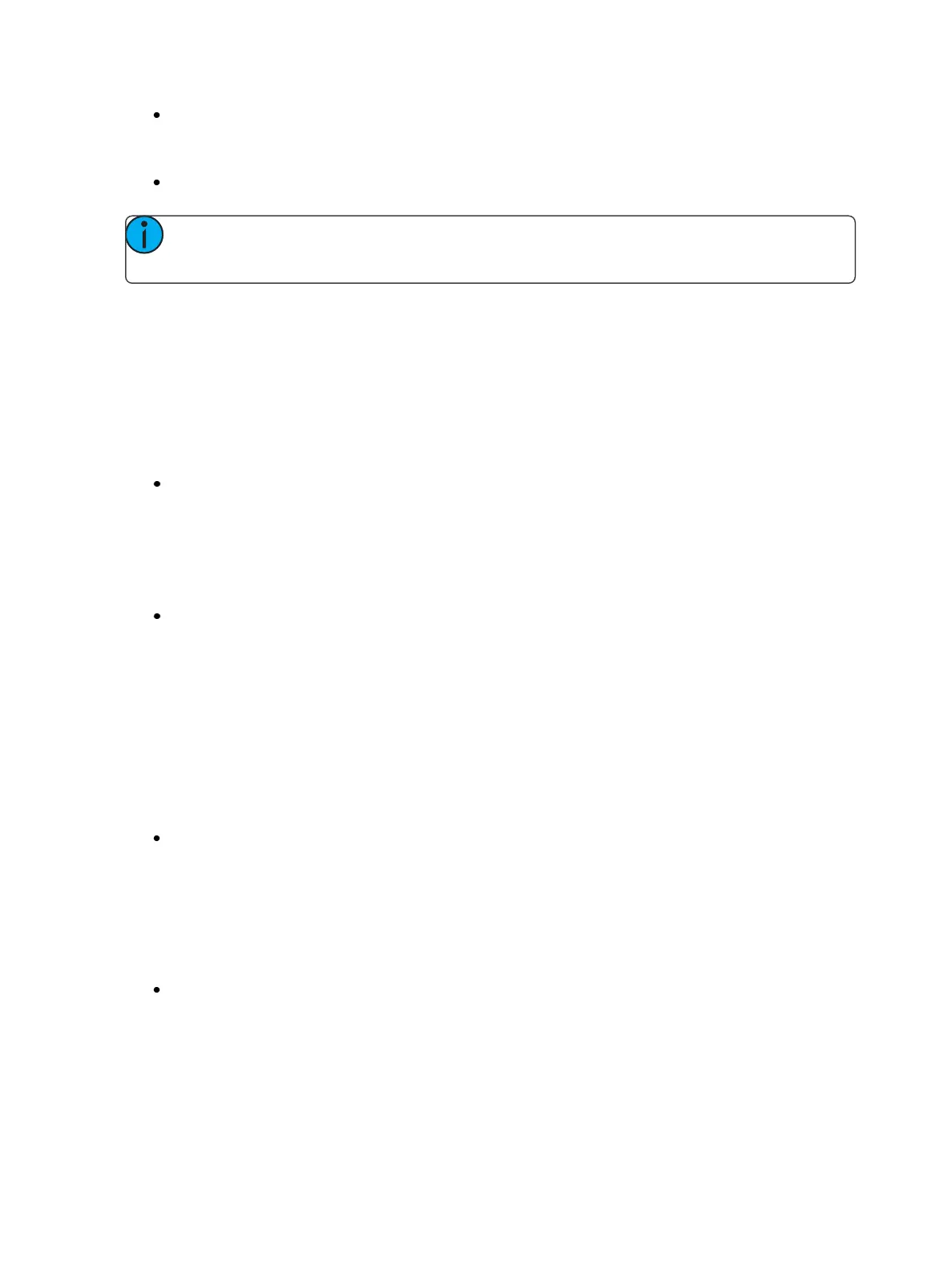Show Control 513
<Event> [4] [/] {Internal} [Enter]
Create an analog input event where an input on address 1 will fire cue 10.
<Event> [4] [/] [1] {Analog Address} [1] [Cue] [1] [0] [Enter]
Note: As there is no action softkey, pressing [Cue], [Sub], or [Macro] assumes you are post-
ing to the action field.
Actions
Cues, macros, and submasters can all be triggered from analog inputs (contact closure or analog
voltage above 6.67V).
Cues
Execute the cue with its programmed cue timing.
Create an analog input event where an input on address 2 will fire cue 11.
<Event> [4] [/] [1] {Address} [2] [Cue] [1] [1] [Enter]
Macros
Triggers the macro and begin execution immediately.
Create an analog input event where an input on address 3 will fire macro 1.
<Event> [4] [/] [1] {Address} [3] [Macro] [1] [Enter]
Submasters
There are four modes: On, Off, Bump, and Fader.
On
The submaster will act as if the bump button was pressed and held down. This will toggle, or release
the same state, when activated again.
Create an analog input event where an input on address 4 will set Sub 1 to On.
<Event> [4] [/] [1] {Address} [4] [Sub] [1] {On} [Enter]
Off
Used to release the submaster’s bump button when triggered from a Sub On action elsewhere in a
show control action
Create an analog input event where an input on address 5 will set Sub 1 back Off.
<Event> [4] [/] [1] {Address} [5] [Sub] [1] {Off} [Enter]
Bump
Acts as if the input is directly controlling the bump button. If the submaster is set to have a dwell
time of Man (manual), then it will instantly flash and turn back off. It is generally recommended to set
the submaster to have a dwell time of Hold or a specified time. The first trigger will turn the

